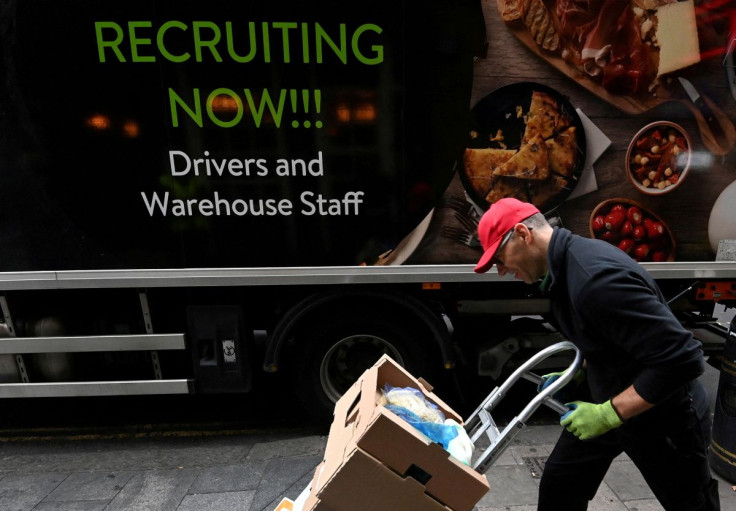UK Unemployment Falls Below Pre-pandemic Rate

Britain's unemployment rate dropped below its pre-pandemic rate in the three months to January while pay rose faster than expected, according to official figures that are likely to bolster the Bank of England's plans to raise interest rates.
The jobless rate fell more than expected to 3.9%, despite the Omicron wave of COVID-19, data from the Office for National Statistics (ONS) showed on Tuesday. That was down from 4.1% in the last quarter of 2021 and its lowest level since the three months to January 2020.
Job vacancies hit a fresh record high in the three months to February at 1.318 million, underscoring the labour shortage facing many employers.
"The further tightening in the labour market will only encourage the Bank of England to raise interest rates on Thursday ... despite the coming extra hit to households' real incomes from the war in Ukraine," said Paul Dales, chief UK economist at Capital Economics.
The BoE is expected to raise the Bank Rate by a quarter point to its pre-crisis level of 0.75% after the central bank's monthly policy meeting on Thursday.
Some of its policymakers have been concerned by a BoE survey of businesses which showed firms planned to raise pay by nearly 5% this year - much more than previous years or pay settlements suggested by other surveys.
Four policymakers voted last month to raise rates to 0.75% rather than the 0.5% finally decided upon.
The BoE is worried that high inflation caused by soaring energy prices and post-COVID bottlenecks could prove slow to dissipate.
PAY BARELY MATCHES PRICES
Average earnings in the three months to January were 4.8% higher than a year earlier, above forecasts in a Reuters poll for a 4.6% rise.
While this is barely keeping up with the rate of inflation - and equivalent to a 0.1% real-terms pay rise using the ONS's preferred CPIH inflation rate - it represents faster pay growth than in the run-up to the pandemic.
However, a narrower measure of real-terms pay excluding bonuses was 1.0% lower than a year earlier - the biggest annual fall since the three months to July 2014.
Living standards are likely to see their biggest drop in 30 years this year, according to BoE forecasts that pre-date the latest inflation shock caused by Russia's invasion of Ukraine, which has sent energy and some commodity prices surging.
In the medium term this squeeze to real incomes is likely to limit inflation pressures as domestic demand is hit and unemployment rises, the BoE predicts.
Economists are also unsure whether the pandemic has led to any lasting change in British workers' bargaining power, which has been weak since the 2008 global financial crisis.
Although British economic output is now slightly higher than before the pandemic, its labour force has shrunk by around 500,000 - largely due to workers aged 50 and over dropping out, often to retire early.
Tuesday's figures showed employment fell by 12,000 in the three months to January, below poll forecasts for a rise of 23,000.
Less reliable preliminary payroll figures for February - which are based on tax data that does not include the self-employed - showed a monthly surge of 275,000. But January's increase was revised down to 61,000 from 108,000.
British finance minister Rishi Sunak said he was confident that the labour market was "in a good position to deal with the current global challenges" with redundancies at record lows.
© Copyright Thomson Reuters 2024. All rights reserved.





















